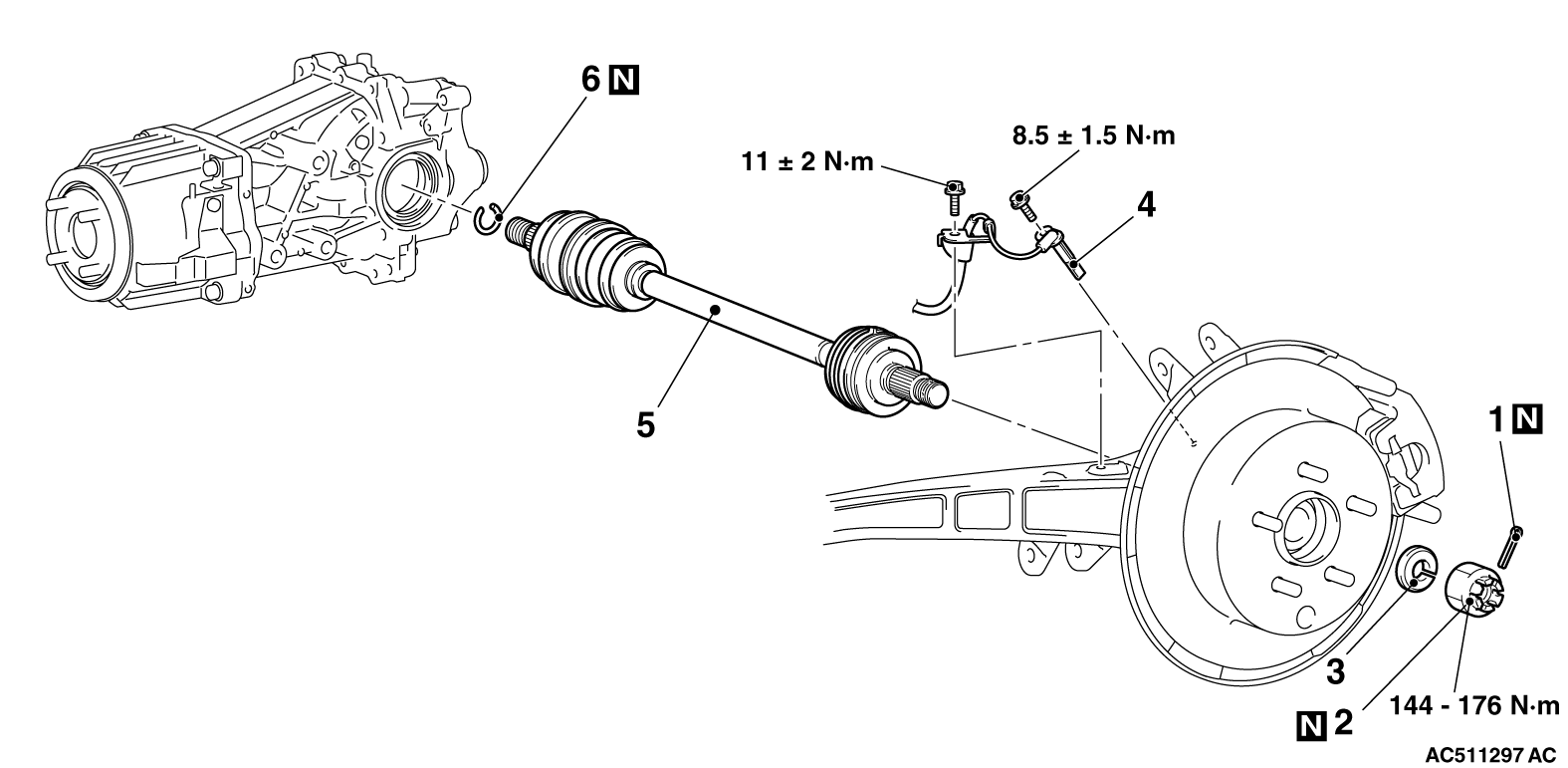Pre-removal operation
- Drain differential gear oil.
- Disconnect joints between the lower arm, trailing arm, shock absorber, and stabilizer link. (Refer to GROUP 34 - Control Link, Upper Arm, Lower Arm Removal and Installation
 .) .)
- Disconnect joint between the upper arm and the trailing arm. (Refer to GROUP 34- Control Link, Upper Arm, Lower Arm Removal and Installation
 .) .)
|
Post-installation operation
- Connect the upper arm and the trailing arm. (Refer to GROUP 34 - Control Link, Upper Arm, Lower Arm Removal and Installation
 .) .)
- Connect the lower arm, trailing arm, shock absorber, and stabilizer link. (Refer to GROUP 34 - Control Link, Upper Arm, Lower Arm Removal and Installation
 .) .)
- Fill the differential gear oil.
- Wheel alignment check and adjustment (Refer to GROUP 34 - On-vehicle Service - Rear Wheel Alignment Check and Adjustment
 ). ).
|

|
| caution |
Do not apply the vehicle weight on the rear wheel hub assembly before fully tightening the driveshaft nuts. Otherwise, the wheel bearing will be broken.
|
Use special tool front hub and flange yoke holder (MB990767) to counter the hub, and remove the driveshaft nut.
|
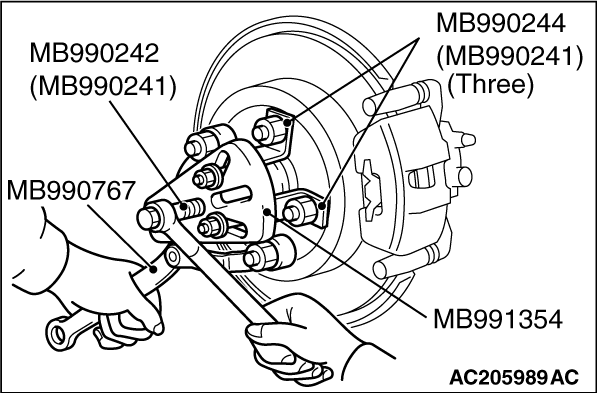
|
1.If the driveshaft is seized, use the following special tools to push the driveshaft out from the hub:
- Puller shaft (MB990242)
- Puller bar (MB990244)
- Puller body (MB991354)
- Front hub and flange yoke holder (MB990767)
| caution |
- Do not pull out the driveshaft from the EUJ assembly side. Otherwise, the ETJ assembly will be damaged. Be sure to remove the driveshaft from the ETJ assembly side, by using a lever.
- Care must be taken to ensure that the oil seal of the differential carrier is not damaged by the spline part of the driveshaft.
|
|
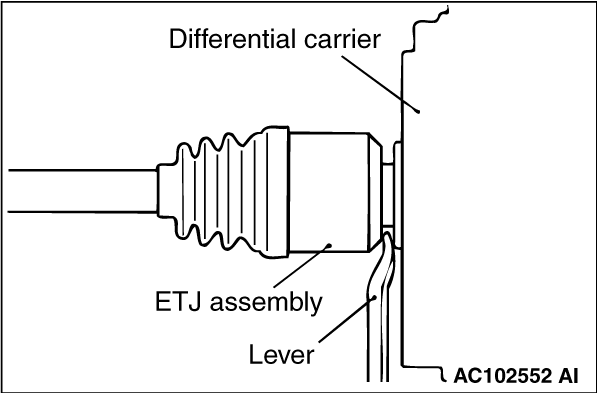
|
2.Use a lever to remove the driveshaft (ETJ assembly side) from the differential carrier.
|
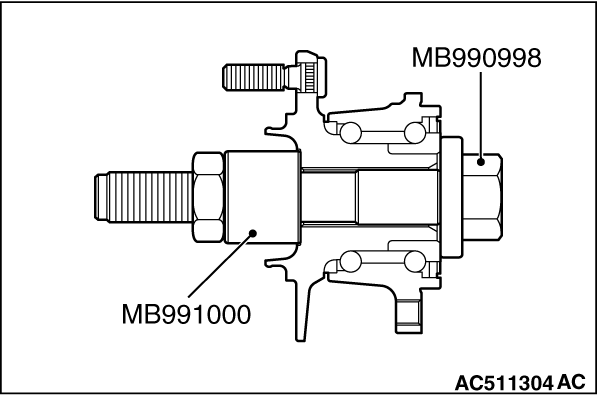
|
| caution |
Do not apply the vehicle weight to the wheel bearing with the driveshaft removed. If, however, the vehicle weight shall be applied to the bearing (in order to move the vehicle), use the following special tools for tightening to the specified torque (160 ± 16 N·m):
- Front hub remover and installer (MB990998)
- Spacer (MB991000)
|
|
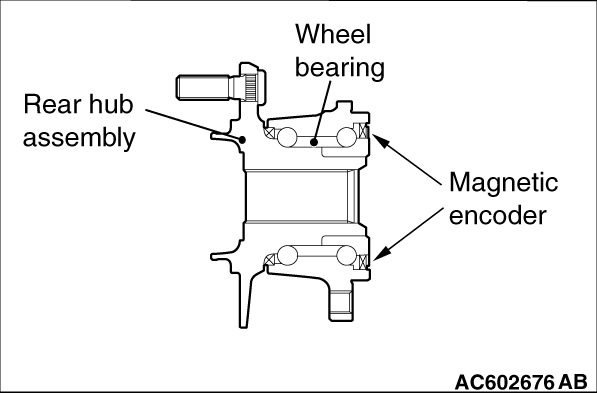
|
| caution |
- The wheel speed detection magnetic encoder collects metallic particles easily, because it is magnetised. Make sure that the magnetic encoder should not collect metallic particles. Check that there is not any trouble prior to reassembling it.
- When installing the drive shaft, make sure that it does not contact with the wheel speed detection magnetic encoder (integrated with the inner oil seal) to avoid damage.
- Do not apply the vehicle weight on the rear wheel hub assembly before fully tightening the driveshaft nuts. Otherwise, the wheel bearing will be broken.
|
|
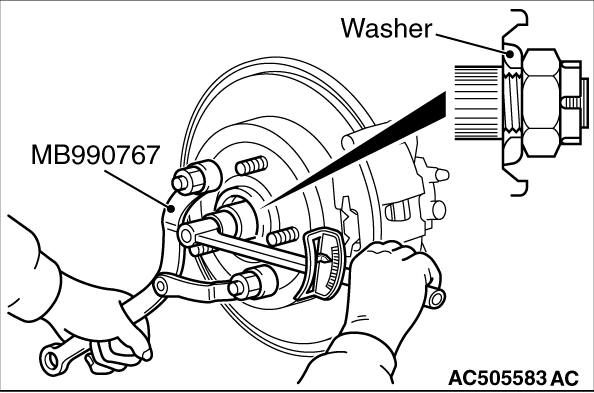
|
1.Incorporate the driveshaft washer as shown in the figure.
2.Using special tool front hub and flange yoke holder (MB990767), tighten the driveshaft nuts to the specified torque. At this time, tighten the nuts within the specified torque range considering the final tightening.
Tightening torque: 144 - 176 N·m
3.If the pin holes do not align with the pins, tighten the driveshaft nut (less than 200 N·m) and find the neareat hole then bend the split pin to fit it.
|
 .)
.) .)
.) .)
.) .)
.) ).
).